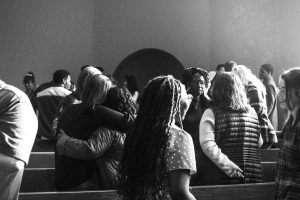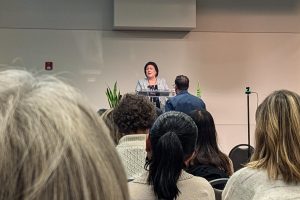In it for the long haul: Washington’s COVID-19 reopening plan
Working towards normalcy and what to expect as the state phases out of quarantine
May 6, 2020
“The quickest way to reopen our economy is to make sure we get this job done.”
Gov. Jay Inslee gave this declaration in a press conference on May 1 to announce the extension on public restrictions to May 31st in an attempt to reassure the public that the Washington State Government is making informed and calculated decisions in response to the COVID-19 pandemic. Even though many are disappointed and stir-crazy at the thought of several more weeks under restricted public interactions, it is clear that these leaders are trying to find real solutions to some very difficult problems and they are not taking this pandemic lightly.
As Gov. Inslee announced in a May 1 press conference, the “Stay Home, Stay Healthy” orders will continue until May 31 at the earliest. Meanwhile, a phased reopening process that has already begun, but it seems to some that both the quarantine and its economic effects will be permanent.
In Washington, the intent of these phases is to create a slow process that ensures that this once-in-a-lifetime experience only happens once.
In an act of transparency, Inslee walked the public through the stages, hoping that Washingtonians can stay united in this cause.
Phase one, which was enacted on May 1st, includes allowing limited activities to open under careful watch and guidance, such as certain construction jobs, fishing, hunting, drive-in religious practices/services and curbside retail — all with the proper social distancing and protective gear.
Phase two will be a full opening of parks with groups of five people or fewer, other outdoor activities and retail services with the restriction focusing on the number of people gathered within stores and in-house serving at 50% capacity. This is also the point during which salons, barbershops and other in-store retail will be allowed to re-open.
When phase three comes into effect, there will be an increase in the number of people allowed to gather in restaurants, retail stores, and outdoor areas to 75% capacity, and gyms and theaters would open at 50%.
Finally, phase four plans to restore all public interactions to pre-pandemic levels while still maintaining social distancing protocols. However, a complete restoration of what we knew as normal will only resume once the proper “pharmaceutical interventions, including a vaccine, are available,” explained Inslee.
Being a student in the midst of these social distancing protocols is a once-in-a-lifetime experience that is bound to have lasting effects on the student body and faculty members alike. If nothing else, this current situation forces an entire nation to take stock of what non-essentials have been prioritized and what has been unknowingly taken for granted.
So, in the midst of the moments of frustration and just remember, when all is said and done, we are all going through this together\; and one day, when quarantine is far behind us everyone’s icebreakers just might include questions like, “Where were you when COVID-19 hit?” “What did you do to stave off the boredom of isolation?” and “Did you stock up on toilet paper?”


























































































